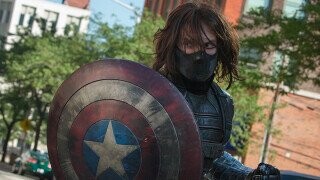Making It As A Comic Artist For Marvel/DC Feels Impossible

With Marvel and DC now making up roughly 70% of all entertainment, it might seem like the best possible time to become a comic book artist and help yourself to some of the spoils of the comic book boom. Who knows, with some talent, hard work, and luck, you might make it big enough that one day Chris Evans will play a butt you drew.

Marvel Comics
Comic book artists know: In their industry, you’d have an easier time becoming Spider-Man than making a living off drawing him. Despite comic books supporting several multi-billion dollar industries these days, almost none of that money goes back to the artists putting the ink on paper. Industry rates haven’t risen by a single cent in the past 20 years -- and it was already crap to begin with on every level. This has made comic book artists the most underpaid artists by a wide margin, their talents being vastly more appreciated in other commercially artistic fields like advertising, animation, or crouching in an alley spray-painting howling wolves on the side of panel vans.
Sure, but making comics has to be so much more fun, right? Wrong. Because you’re so underpaid, artists have to work themselves to death (sometimes literally) to make ends meet. According to veteran Brian Churilla, the expected yearly output just to be able to call yourself a professional is 12 issues, 264 pages, and 4 covers. Making a living drawing spandex boils down to roughly a 50-60 hour workweek every single week of the year, with the closest you’ll get to a vacation is drawing Colossus in daisy dukes for a beach issue.

Marvel Comics
As such, comic artists often have to self-inflict crunch at AAA game studio levels of toxicity, causing many to work in a constant state of isolation and burnout. Speaking of toxicity, despite having to huddle behind a massive drawing board or tablet every waking hour, comic book artists are also forced to be public figures to promote their work. This leaves these minimum wage workers incredibly vulnerable to mass harassment by some of the shittiest fan bases on the internet (who don’t know how to make fancams). And since you’re a forever freelancer, corporate overlord Marvel won’t blink to replace you with another cheap body if you stir up any kind of controversy by, for example, having a personality.

What do these incredible amounts of pressure and ingratitude lead to? Shitty work. Since comic book artists are forced to work cheap and fast, that doesn’t leave a lot of room for "good." Those in the industry aren’t ashamed to admit that under these impossible working conditions, they often can’t offer more than their B-game before having to rush off to the next assignment.
Companies like Marvel are seemingly aware of this, which is why they pay established artists disproportionately well to create incredible cover art -- safe in the knowledge that when fans flip open their paid-for copy to find much sloppier drawings, the fallout will mostly be directed at someone with 600 followers on Instagram, someone who they can easily replace with some grateful 20-year-old who’ll work for X-Men exposure.
Even if you, as if by Dr. Strange magick, managed to escape the vicious cycle of being underpaid-overworked-underperforming and make a splash page in the big league, this changes very little. Just look at Marvel legends like Ed Brubaker, who earned more royalties from a trimmed cameo in Captain America: Winter Soldier than from the pittance Marvel gave him for co-creating the modern Winter Soldier. So unless you’re the friendly ghost of Stan Lee, your definition of “making it” as a comic book artist better limit itself to “making half as much as a dishwasher for double the work.” Because heroes aren’t expected to be paid for their tireless work, and for the time being, neither are the people who make them.
For more weird tangents, do follow Cedric on Twitter.
Top Image: Hernan Pinera, Flickr